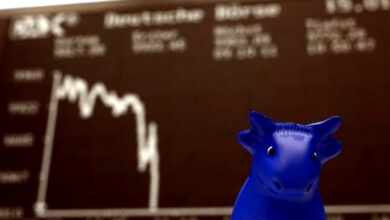Stocks have declined the most in two weeks while the dollar has risen on positive U.S. data.

The dollar maintained gains after strong U.S. statistics that once again suggested the Federal Reserve could stick longer with aggressive interest rate increases, despite Asian stocks posting their biggest declines in two weeks.
While analysts noted that markets had already priced in much of the positive news, investors continued to hold out optimism that China’s economy would improve with the relaxation of the nation’s zero-COVID policy.
The greatest drop since November 21 was experienced by MSCI’s broadest index of Asia-Pacific equities outside of Japan, which had reached a three-month high the previous day before falling 1.4%. The benchmark has risen by 20% from its October lows, owing to persistent rumours that China is loosening its anti-pandemic policies.
Related: Australia stocks advanced at close of trade; S&P/ ASX 200 up0.33
Stock prices dropped 1.6% in Taiwan, 1.1% in Hong Kong, and 1% in Korea. China’s stock market continued to improve, with the overall index rising 0.6%, while Japan’s stock market increased by 0.3%.
The possibility that the Fed would drop rates again too late is the “black swan in the room,” according to Havard Chi, head of research at hedge fund Quarz Capital Asia.
Asian markets dipped on Tuesday, after a decline in global stocks and Treasury prices on Monday, as fresh indications of a robust U.S. economy increased expectations that interest rates would rise for an extended period of time.
According to Chi, key spot indicators such as falling home prices, rental rates, commodity and freight costs, as well as rising layoffs and inventories, already point to a weaker US economy.” Monetary policy works with a lag,” he added.
Activity in the US services sector surprisingly increased in November, and employment increased. It came in the wake of a strong November payroll report for the United States and was the most recent indicator of economic momentum that could encourage the Federal Reserve to tighten policy even more.
According to futures, the market anticipates the high for U.S. short-term interest rates to be 5.001% in May. The anticipation has increased by around 9 basis points since last week. According to futures markets, rates will have decreased to 4.574% by December 2023. The dollar maintained its strength against major peers after posting its biggest gain in two weeks on Monday, aided by strong US services data.
The Australian currency recovered some ground after the nation’s central bank increased interest rates to decade-high levels and maintained its forecast for further increases, dispelling any notion that it was about to pause.
Despite the country’s loosening of lockdown restrictions, Chinese equities have surged recently, but they are among the poorest performers in Asia so far this year.
In the latest loosening of restrictions around the nation following last month’s historic protests, Beijing on Tuesday eliminated the requirement that citizens present negative COVID tests in order to access stores and offices.
Related: Asian stocks rise on hopes that rate hikes will slow down and that China will reopen.
According to Chi, the investment firm was generally positive on Asian shares. “We are taking a “buy the dips” approach in expanding our allocation since we feel that a full reopening of the Chinese borders will only be from mid-February onward,” she added.
In addition to a European Union embargo on the purchase of Russian crude by sea, a G7 price ceiling on Russian seaborne oil went into effect on Monday. This led to a slight increase in oil prices.
The price of Brent crude futures rose 0.5% to $83.1 per barrel. After the U.S. GDP figures, futures fell more than 3% in the prior session.





